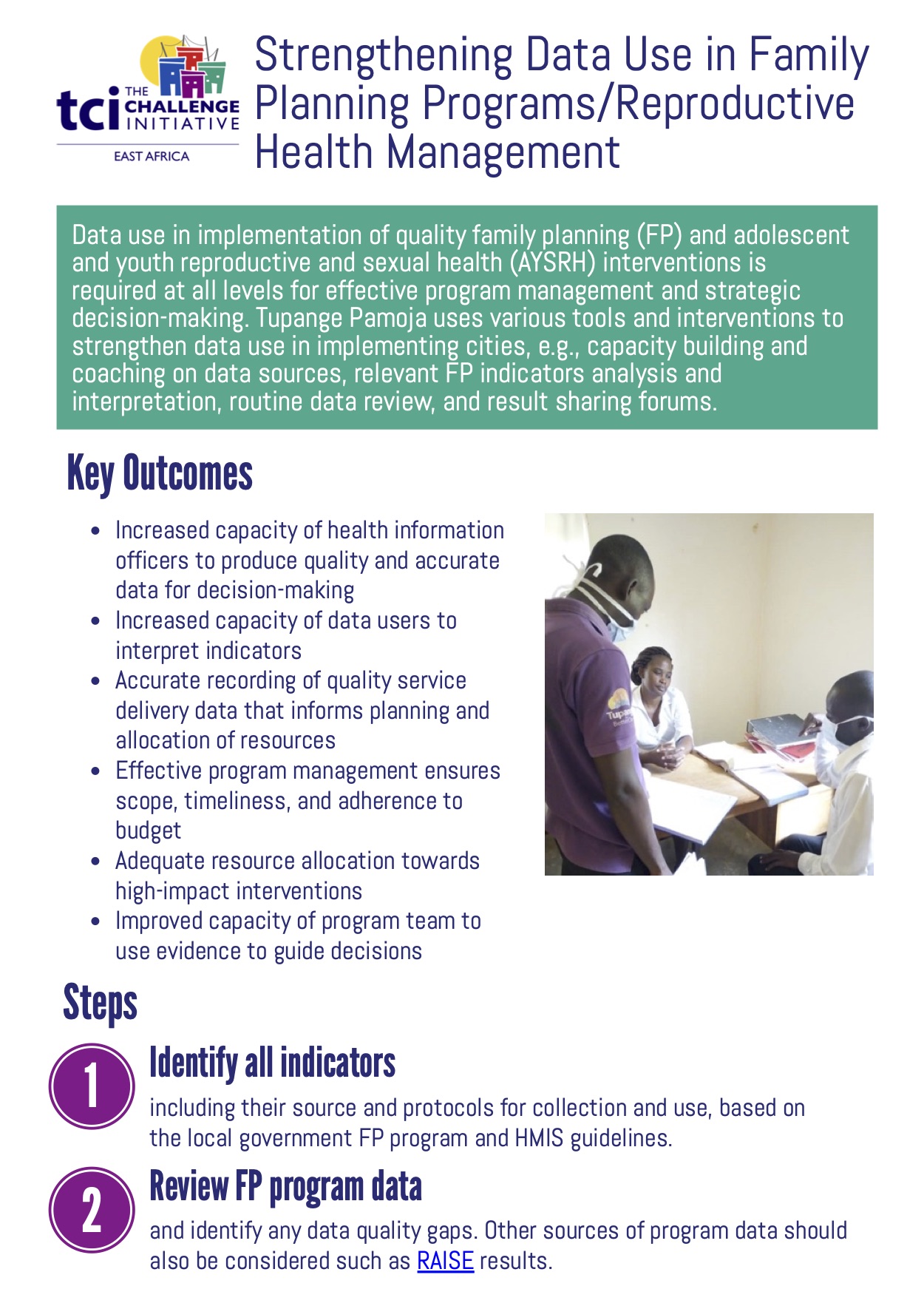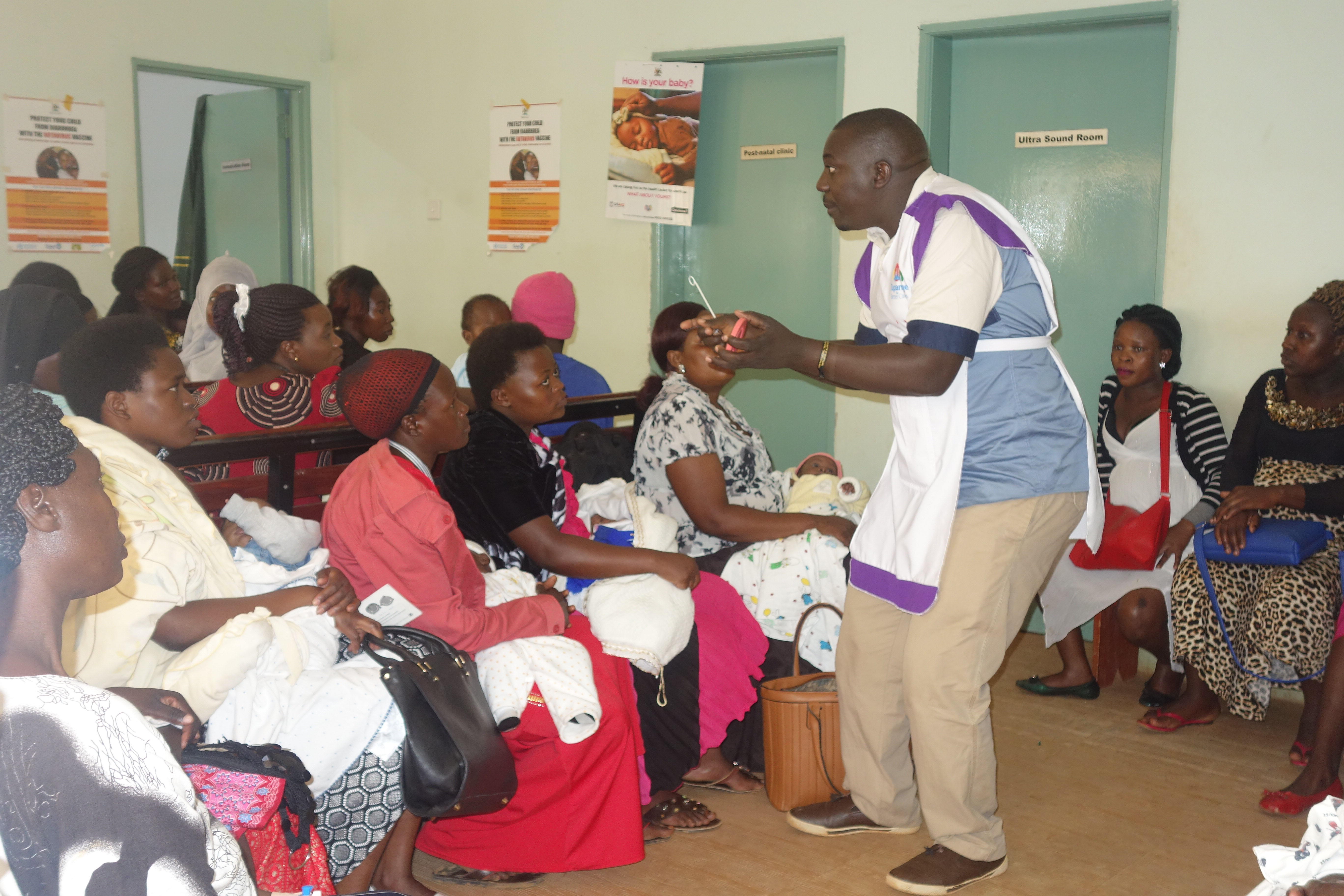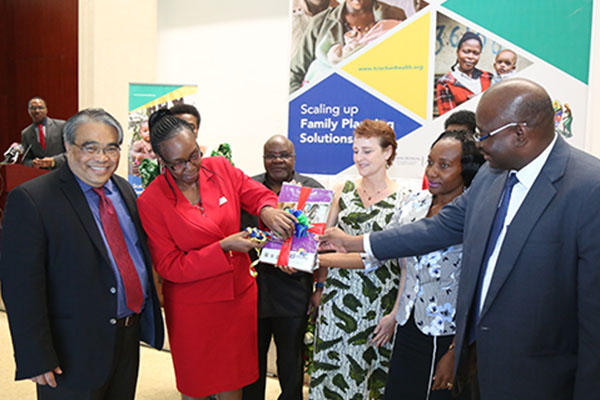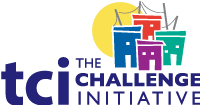East Africa Toolkit: Self Reliance
- Home
- Help and Support
- Close
- Toolkits
- Global Toolkit
- AYSRH Toolkit
- Hub Toolkits
- Core High-Impact Practices
- Gender Essentials Mini Course
- Close
- Resource Collection
- Community of Practice
- Coaching
- Log In/Register
- My Profile
- English
Strengthening Data Use in Family Planning Programs/Reproductive Health Management
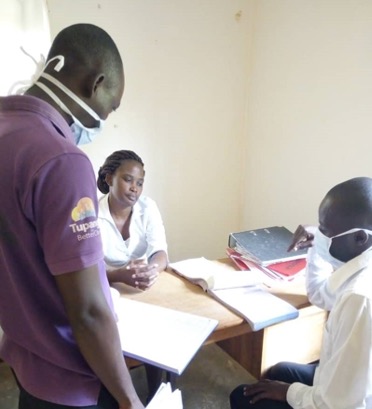
Data use in implementation of quality family planning (FP) and adolescent and youth reproductive and sexual health (AYSRH) interventions is required at all levels for effective program management and strategic decision-making.
While the national government has a Health Management Information System to capture various indicators related to FP/AYSRH, there still exists gaps in utilization of the available data at various levels.
Tupange Pamoja is working with cities to ensure that implementers at all levels are using data for decision-making. Tupange Pamoja is using various tools and interventions to strengthen data use in its implementing cities, e.g., capacity building and coaching on data sources, relevant FP indicators analysis and interpretation, routine data review and result sharing forums.
These efforts are helping the program in improving cost efficiencies, program performance, timely course corrections and adequate planning.
Why is Strengthening Data Use in Family Planning Programs Important?
- To support identification of gaps in FP/AYSRH programming that TCI proven interventions can most effectively address
- To design program implementation strategies such as advocacy for support and resources, tracking of utilization of budgeted funds
- To help track progress and monitor impact of interventions being implemented
- Will support advocacy efforts towards support resource allocation and prioritization
- To enable effective management of the FP program
Evidence
- During the annual work plans for local governments, implementers have used data to support their advocacy efforts for increase in resources and activity prioritization.
- At all stages of the TCI business unusual model, implementers make reference to the data on the TCI dashboard. For example, during program design, implementers will select which high-impact interventions to strengthen as well as effectively budget for same
- During implementation data has been used to determine most impactful interventions and adaptations related to them.
- Data has been used to track progress of implementation.
- Data has been used to initiate and guide course correction and problem solving in the geographies.
Guidance on Strengthening Data Use in Family Planning Programs/Reproductive Health Management
- Based on local governments FP program, identify all indicators, their source, collection and use.
- Review FP program data and identify any data quality gaps.
- Determine levels of use of the various indicators and align then to specific program outcomes and decisions. During coaching, clearly define indicators to ensure they are well understood and eliminate chances of inaccurate figures.
- Identify any gaps within the relevant local government structures that could hamper data use.
- Schedule a coaching/refresher training for relevant staff based on gaps identified (from the data collection and decision-making levels). Within the orientation, ensure that key indicators and the programmatic decisions they could affect are shared. This should be specific and relevant to the various levels of implementation.
- After training, conduct a data-flow process for reporting and allocate tasks and responsibility with actionable completion timeframes.
- Follow up and strengthen data reporting processes.
- Support local government staff to compile, analyze or summarize and interpret the results from data received. As much as possible, use simple language to explain the results and build interest of various audiences.
- Conduct routine data review meetings to assess the accuracy, completeness and quality of data reported. To address any arising issues, prepare a coaching plan for staff requiring support in reporting.
- Work together with local government staff to review program decisions made using the data.
- Share the review meeting findings with the local government staff and officers to review processed data and inform decisions, course corrections and problem solving.
Roles and Responsibilities
| Category | Roles/Responsibility |
|
Health Records and Information Officer |
|
|
Program Implementation Team |
|
Key Outcomes
- Increased capacity among health information officers to produce quality and accurate data for decision-making
- Increased capacity among data users on interpreting relevant indicators
- Accurate recording of quality service delivery data that informs planning and allocation of resources to meet the health service needs of the urban poor
- Effective management of program to ensure it’s on scope, timely and within budget
- Adequate resource allocation towards and prioritization of high-impact interventions
- Improved capacity of program implementation team to use evidence to guide decisions, make course corrections, and solve problems as needed
Monitoring Processes
- Accurate and timely reporting of relevant indicators
- Completeness of reports submitted
- Staff coached on data use and reporting and actively implementing the data use plan
- Decisions (and their timeliness) made at various levels based on results shared
Cost
- Coaching material for local government staff on data collection, reporting and use
- Purchase of reporting software, computers, etc.
- Orientation cost
Date Use in Action
Sarah Namutamba, HMIS Focal Person from Iganga District in Uganda, shared:
“Before TCI, data for FP was not being analyzed at all. No data elements used to be added. Even in performance review meetings, FP indicators were rarely discussed. After we were coached on data for decision making, we started planning based on evidence from available data in DHIS-2. With the TCI dashboard, health workers are more responsible and health facilities own their data. They ensure completeness of their FP data reports so that their efforts are realized. VHTs (CHWs) have learnt to demand for their data to be displayed at the health facilities including during program implementation meetings. We now discuss our FP data regularly and the service providers are able to identify gaps and strategies to improve performance. We are able to take FP services where they are most needed.
TCI APP USERS PLEASE NOTE
You will only receive CERTIFICATES by email – when earning a score above 80% – and will not be able to view or print a certificate PDF from the TCI app.
Test Your Knowledge
Earn a Certificate
Quiz Summary
0 of 5 Questions completed
Questions:
Information
You have already completed the quiz before. Hence you can not start it again.
Quiz is loading…
You must sign in or sign up to start the quiz.
You must first complete the following:
Results
Results
0 of 5 Questions answered correctly
Your time:
Time has elapsed
You have reached 0 of 0 point(s), (0)
Earned Point(s): 0 of 0, (0)
0 Essay(s) Pending (Possible Point(s): 0)
Categories
- Not categorized 0%
- 1
- 2
- 3
- 4
- 5
- Current
- Review
- Answered
- Correct
- Incorrect
-
Question 1 of 5
1. Question
Benefits of using Data for Decision-Making include:
CorrectIncorrect -
Question 2 of 5
2. Question
Coaching the facility staff on data collection and reporting is the role of the Program Implementation team.
CorrectIncorrect -
Question 3 of 5
3. Question
Outcomes of strengthened data use include:
CorrectIncorrect -
Question 4 of 5
4. Question
How useful did you find the information and/or tools presented on this page? Please write your response in the box below using one of the following phrases: Very useful, Useful, Somewhat useful, Not useful.
Feel free to comment on why you made that choice.
-
This response will be awarded full points automatically, but it can be reviewed and adjusted after submission.
Grading can be reviewed and adjusted.Grading can be reviewed and adjusted. -
-
Question 5 of 5
5. Question
How do you intend to use the information reviewed and/or tools that you accessed?
-
This response will be awarded full points automatically, but it can be reviewed and adjusted after submission.
Grading can be reviewed and adjusted.Grading can be reviewed and adjusted. -


